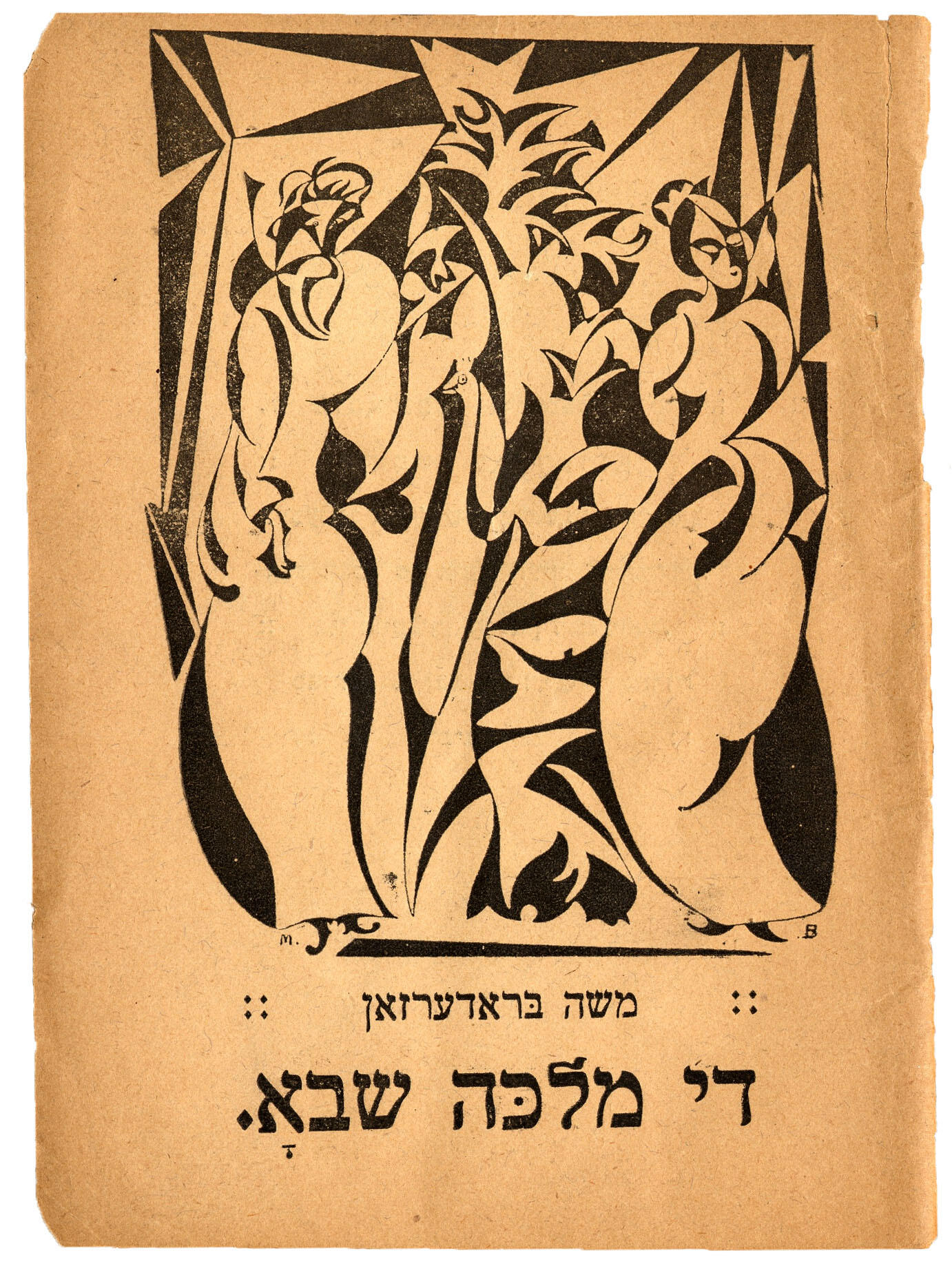Cover, Di malke Shvo: dramatishe poeme
Moyshe Broderzon
1921
In 1920 and 1921, Broderzon, the guiding force of Yung-yidish (Young Yiddish), a literary and artistic group he co-founded in Łódź, published over half a dozen books of poetry and plays. Prolific and multi-talented, he illustrated many of his own books in a striking abstract style, including the cover of this play, Di malke Shvo (The Queen of Sheba). The journal published by Yung-yidish was subtitled Lider in Wart un Zeichnugen (“poems in word and drawings”), expressing the group’s desire to put visual and word art on an equal footing by combining text with drawings and woodcuts.
Credits
Published in: The Posen Library of Jewish Culture and Civilization, vol. 8.
You may also like

The Meeting: A Jewish Youth and Two Women in an Urban Alley
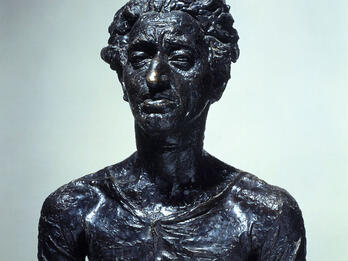
Jacob Kramer
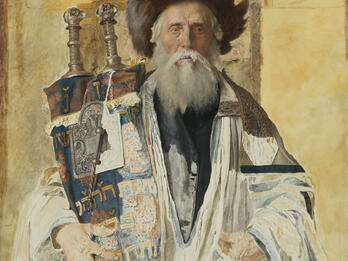
Of the High Priest’s Tribe
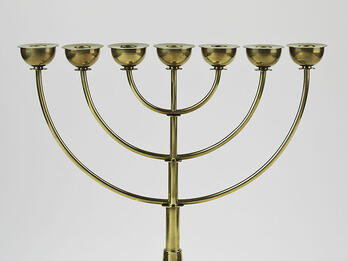
Seven-Branched Candelabrum
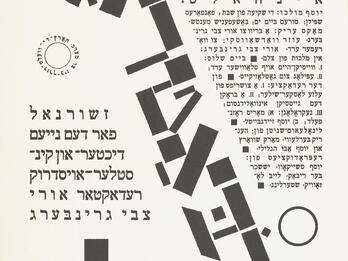
Cover of Albatros, No. 3
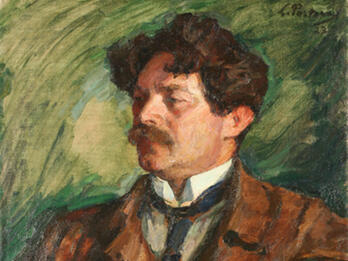
Portrait of Saul Tchernichovski
Creator Bio
Moyshe Broderzon
Moyshe Broderzon was born into a wealthy merchant family in Moscow and grew up in Russian Poland. Taking his first steps in Yiddish poetry just before World War I with rather uninspired decadent verse (e.g., “Black Butterflies,” 1913), he found himself the only Yiddish poet of note in wartime and early revolutionary Moscow. There, inspired by Russian Futurism’s bravado, he wrote Yiddish futurist verse, published a book of Yiddish haiku and tanka, and drew notable Russian Jewish composers and artists into bold plans for a multigenre Jewish artistic renaissance in 1917–1918. His lovely modernist book Sikhes-khulin, co-created with El Lissitzky in 1917, was released in deluxe formats. Thereafter, Broderzon lived in Łódź from 1918 to 1939 and was a founder of the Yung-Yiddish poetry group as well as Ararat, a cabaret-theater company that featured a bevy of talented young Yiddish actors and comedians, notably Yisroel Shumacher, Shimon Dzigan, Mina Bern, and Judith Berg. When the Germans invaded Poland, Broderzon fled to Moscow. In Stalin’s crackdown on Jewish cultural activity, Broderzon was sent to a Siberian labor camp in 1948. Released in 1955 and repatriated to Poland, Broderzon died soon after his return. He was a man of many talents: he wrote poetry, articles, drama, songs for children, and libretti for opera; he produced plays and puppet shows; and he even turned his hand to prints and drawings.
You may also like

The Meeting: A Jewish Youth and Two Women in an Urban Alley

Jacob Kramer

Of the High Priest’s Tribe

Seven-Branched Candelabrum

Cover of Albatros, No. 3



